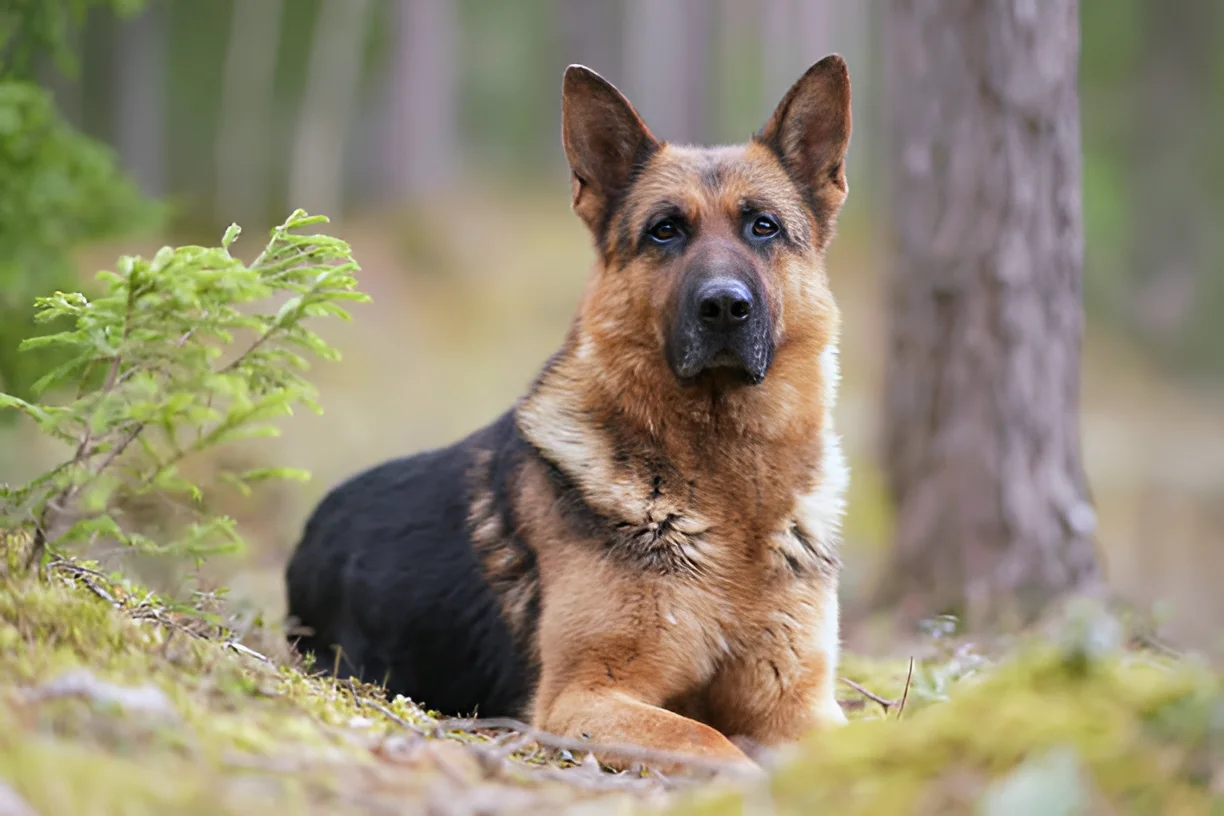A German Shepherd is generally considered a large breed rather than an extra-large (XL) breed. Let’s explore the characteristics, size standards, and factors that define the German Shepherd’s classification.
German Shepherds are one of the most popular and recognizable dog breeds in the world. Known for their intelligence, loyalty, and versatility, they serve as working dogs in various roles, including police, military, and search and rescue. However, there is often confusion about whether they are classified as large or extra-large dogs. This comprehensive guide will delve into the specifics of their size, helping you understand where they fit in the canine size spectrum.
Understanding German Shepherd Size Standards
1. Breed Standards
According to the American Kennel Club (AKC), German Shepherds are classified as a large breed. Adult male German Shepherds typically stand between 24 to 26 inches tall at the shoulder and weigh between 65 to 90 pounds. Females are slightly smaller, standing between 22 to 24 inches tall and weighing between 50 to 70 pounds.
2. Comparison with Other Breeds
To understand why German Shepherds are considered large rather than extra-large, it’s helpful to compare them with other breeds. Extra-large breeds, such as Great Danes and Saint Bernards, often exceed 100 pounds and stand over 30 inches tall. In contrast, German Shepherds fall within the size range of other large breeds like Golden Retrievers and Labrador Retrievers.
Factors Influencing German Shepherd Size
1. Genetics
Genetics play a significant role in determining the size of a German Shepherd. Breeders select for specific traits, including size, to maintain breed standards. However, individual dogs may vary slightly in size due to genetic diversity.
2. Diet and Nutrition
Proper nutrition is crucial for a German Shepherd’s growth and development. A balanced diet rich in proteins, fats, and essential vitamins and minerals supports healthy bone and muscle development. Overfeeding or underfeeding can lead to size variations and health issues.
3. Exercise and Activity Level
Regular exercise helps maintain a German Shepherd’s muscle tone and overall health. These dogs are active and require daily physical activity to stay fit. Lack of exercise can lead to obesity, which can affect their size and health.
Physical Characteristics of German Shepherds
1. Body Structure
German Shepherds have a well-balanced and proportionate build. They possess a strong, muscular frame that conveys power and agility. Their bodies are slightly longer than they are tall, giving them a sleek and athletic appearance.
2. Coat and Color
German Shepherds have a double coat that provides protection against various weather conditions. The outer coat is dense and straight, while the undercoat is soft and insulating. They come in various colors, including black and tan, sable, and all-black.
3. Head and Expression
The head of a German Shepherd is noble and strong, with a slightly domed forehead and a pronounced stop. Their ears are large and stand erect, giving them an alert and attentive expression. Their eyes are almond-shaped and dark, reflecting their intelligence and confidence.
Health Considerations for Large Breeds
1. Joint Health
Large breeds like German Shepherds are prone to joint issues such as hip dysplasia and elbow dysplasia. Regular veterinary check-ups, a healthy diet, and appropriate exercise can help manage and prevent these conditions.
2. Weight Management
Maintaining a healthy weight is crucial for preventing obesity-related health problems. Overweight dogs are at higher risk for diabetes, heart disease, and joint issues. Regular exercise and a balanced diet are key to keeping your German Shepherd at a healthy weight.
3. Lifespan
German Shepherds typically have a lifespan of 9 to 13 years. Providing them with proper care, including regular veterinary visits, a nutritious diet, and adequate exercise, can help ensure they live a long and healthy life.
Training and Socialization
1. Early Training
German Shepherds are highly intelligent and trainable. Early training and socialization are essential to ensure they develop into well-behaved and confident adults. Positive reinforcement techniques work best with this breed.
2. Obedience Training
Obedience training helps establish a strong bond between you and your German Shepherd. It also ensures they understand and follow commands, making them easier to manage and more enjoyable to be around.
3. Socialization
Exposing your German Shepherd to various people, animals, and environments from a young age helps them become well-rounded and adaptable. Socialization reduces the likelihood of fear-based behaviors and aggression.
Conclusion
A German Shepherd is generally considered a large breed rather than an extra-large (XL) breed. Understanding their size standards, physical characteristics, and health considerations can help you provide the best care for your German Shepherd. These dogs are loyal, intelligent, and versatile, making them excellent companions and working dogs. By meeting their needs and understanding their unique traits, you can ensure your German Shepherd thrives.
The photo featured below the post headline is Credit: Eudyptula/istockphoto
I hope you find this post helpful and informative. If Yes’ feel free to share it with your friends!
Frequently Asked Questions
How big do German Shepherds get?
Adult male German Shepherds typically stand between 24 to 26 inches tall and weigh between 65 to 90 pounds. Females are slightly smaller, standing between 22 to 24 inches tall and weighing between 50 to 70 pounds.
Are German Shepherds considered large or extra-large dogs?
German Shepherds are generally classified as large dogs. They do not typically reach the size of extra-large breeds like Great Danes or Saint Bernards.
What factors influence the size of a German Shepherd?
Genetics, diet, and exercise are the primary factors that influence a German Shepherd’s size. Proper nutrition and regular exercise are essential for healthy growth and development.
How can I ensure my German Shepherd stays healthy?
Regular veterinary check-ups, a balanced diet, and adequate exercise are crucial for maintaining your German Shepherd’s health. Monitoring their weight and providing joint support can also help prevent common health issues.
What is the lifespan of a German Shepherd?
German Shepherds typically live between 9 to 13 years. Providing them with proper care and attention can help ensure they live a long and healthy life.

